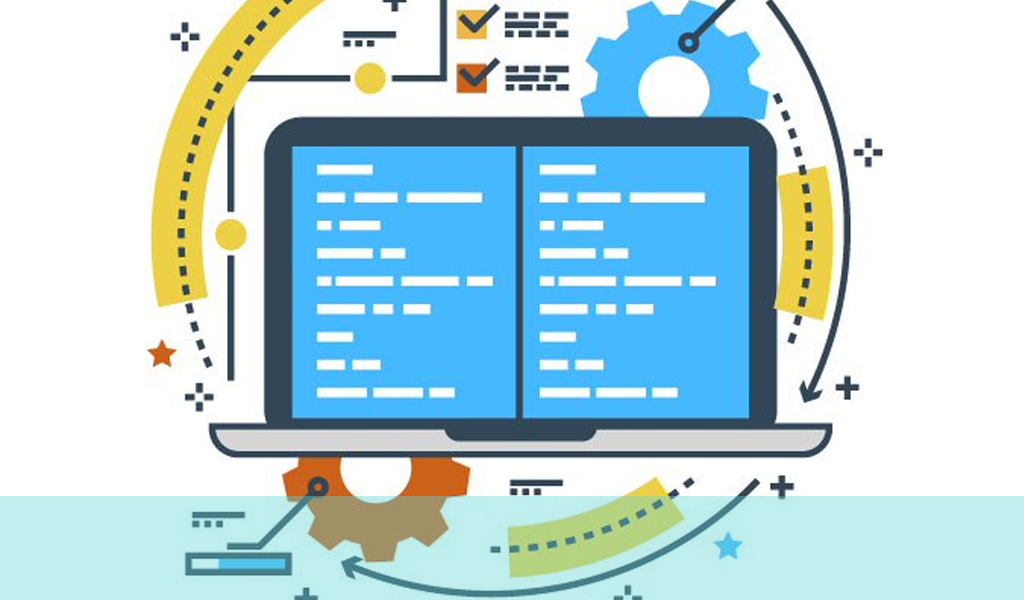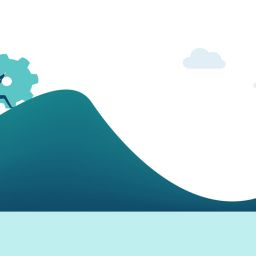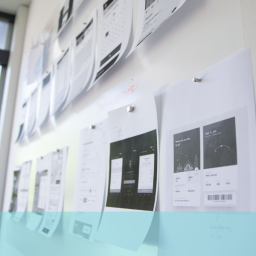
If you thought UX research was a simple case of applying a standard test to each new product to see how it works once it’s built, you couldn’t be further from the truth.
There are countless user experience research methods, all practical ways to uncover information about your new, possible, or existing products. Given how products and features are measured and analysed differently, each test can be more suitable for particular situations or stages of your design and build.
It all sounds quite complex—and that’s a fair statement—so to realise which are the ideal solutions for each stage of your process requires an expert to make those judgement calls.
Why use different UX research methods?
The information that will help you on your way before starting a project is very different from what you’ll need when you’re ready for its launch.
Before you get the ball rolling with your new app, website, or digital or physical experience, you’ll need to understand your users: who they are, their needs, how they behave, their experiences, what they like and what they don’t, and how all that results into the ways they’ll view and use your product.
And then at launch? You want to check that you’ve met all those needs. That means ensuring your product works just as hoped, offering a rich and valuable experience. Your users should be comfortable using all of the features quickly and easily and are 100% happy that your product improves their lives, solving the problems it was designed to address.
Attitudinal or behavioural user research method?
You’d think an interview, where your users tell you what they think and where they stand on a subject, is pretty definitive. But, sadly, it’s not always the case; enter attitudinal and behavioural UX research methods.
This area caters for the fact that what people say isn’t always what they do.
Attitudinal research is regularly conducted in interviews, asking what users think of a product, whether they’re likely to use it, or how much they might pay.
Behavioural research features throughout observational UX research, monitoring subjects while using the product or utilising eye-tracking software.
Qualitative or quantitative user research method?
There are two main methods of measuring research data: qualitative and quantitative.
Qualitative methods typically cater to long-form answers to questions about behaviours, attitudes, or direct observations:
- Why didn’t it work?
- What went wrong?
- What made the process most frustrating?
You can’t measure these questions with a yes or no answer or quantifiable into a score or rating.
Quantitative methods are typically numerical or defined by a scale and are gathered indirectly via questionnaires, surveys, and product testing.
- How long did it take?
- Were you happy with the outcome? Yes/No
- On a scale of 1–8, how easy was it?
- The number of misclicks, successful transactions, and completed journeys.
These measurements can be pitched against each other to score a feature, recognise patterns, or define rates of successes and failures.
Make a plan with defined goals before you choose your ideal options
Having a clear view of what you want to achieve will reveal the best methods of UX research to meet those needs. But how do you define those goals to understand the most suitable tech or methodology?
1. Clearly define your goals
Goals should be specific, measurable, achievable, relevant and time-bound/phased (as defined by the SMART framework)
2. Deliver data-driven decision-making – leaving guesswork at the door
We’re all subject to cognitive bias (subconscious opinions and ideas that drive our decision-making). UX research delivers objective user data to drive your decisions; it takes any guesswork and personal opinions out of your users’ wants and needs.
3. It’s not always about numbers, scores, and quantifiable data
Not all UX research methods deliver measurable results; most importantly, they offer opportunities for action to remove pain points and improve user journeys.
4. Impact vs. effort – where are your resources best spent?
Consider effort vs. benefits and impact. Ultimately, the highest impact features with the most benefit to your users are what you want.
However, if the effort to produce your preferred options outweighs the benefits, you may better spend your time and resources elsewhere. Minimum effort for maximum impact is ideal. Massive effort for minimum impact? Forget it; move on to something with value for your users.
5. Continue to ask these three questions throughout your process
- What do your users need?
- Where are they struggling?
- How can you help them?
Whatever UX research methodologies you use, if you keep those questions in mind throughout the process, you shouldn’t go too far wrong.
How many different user research methods are there?
You can’t put a figure on it, but it’s a lot. And when you think you’ve got your head around them all, new UX research methods come to light, offering even more options for evaluation.
The following list covers a healthy selection, including some of the most commonly used.
| Field studies and user interviews | Concept testing |
| Stakeholder interviews | A/B testing |
| Requirement and constraint interviews | 5-second testing |
| Design reviews | Feedback reviews |
| Observation | FAQ reviews |
| Prototyping | Diary studies |
| Experience sampling | Competitive testing |
| Understanding mental models | Competitive testing |
| Persona building | Competitive analysis |
| Task analysis | Journey mapping |
| Prototype feedback and testing | Human-centred design |
| Creating user stories | Design diversity exploration |
| Card sorting | Pluralistic walkthrough |
| Qualitative usability testing | User/focus group outreach |
| Benchmark testing | Training research |
| Accessibility evaluation | Social media monitoring |
| Surveys | Analytics reviews |
| Contextual inquiry | Eye-tracking |
| Search-log analysis | Usability testing |
| Moderated or unmoderated testing |
Typical UX research testing models
Now let’s look at the basic design and development stages and some of the most common UX reserach methods for each.
1. Planning
Example qualitative research methods:
Observation – In a lab or a field study, studying how users behave and interact with a product in a specific or real-world environment uncovers where frustrations occur, what could help ease each problem, and ultimately enhance your product for its typical user.
Competitive analysis – Unless you’ve got a truly unique idea, there will be associated products already on the market. Exploring their strengths and weaknesses goes a long way to providing a healthy starting point for your process.
Example quantitative research methods:
Surveys and questionnaires – Carefully yet cleverly constructed surveys can provide helpful insights for new products or features. They’re relatively easy to execute and offer an opportunity to access a wide range of test subjects.
Clustering – Whether the data is quantitative or qualitative, clustering replies and responses into categories and patterns creates quantitative data sets into trends in reactions and behaviours.
2. Design and build stages
Example qualitative research methods:
Desirability studies – This method explores how users feel about features, helping designers to pinpoint preferred UX and UI options. Results are delivered as feelings and emotions, not scores.
Focus groups – Putting a group of users together to discuss the merits and pitfalls of features and products delivers different insights to questionnaires and surveys. However, groups must stick to a detailed program catering to essential goals and prevalent areas of study.
Example quantitative research methods:
Card sorting – A relatively basic but extensively utilised method where users categorise actions, processes, information, and other topics into an order that feels right to them. This is a popular tool for sites with complex navigation systems and site architectures.
Tree testing – Typically partnered with card sorting, tree testing helps to validate newly selected categories. The user is asked to locate a product from the card architecture to show how successful that iteration is.
3. Product launch
Example qualitative research methods:
Usability testing – One of the most popular methodologies throughout UX research, users are assigned tests and tasks using prototypes, MVPs, or final products. It details how they move through the product, how intuitive it is, and the simplicity or struggles of using its features.
User interviews – Straightforward conversations about how a product’s final version performs delivers open and honest reviews about its operation. In addition, existing, new, or possible future customers offer different insights, each valuable to improving performance for each group.
Example quantitative research methods:
A/B testing – This method pitches one option of a feature or layout against another. It requires a generous user pool, catering for all your product’s user profiles. It shifts designers’ preferences to those of the users, removing the bias of its creators.
Eye tracking – A technology that allows you to monitor what’s attracting your users’ attention and which features are getting the most exposure. Such elements could be distractions from the information or CTAs you see as priorities, or they may be the best-performing elements you can further utilise throughout your product.
4. Product growth
Example qualitative research methods:
Competitive analysis – Once you’ve entered the market, measuring how you perform against your competitors is vital. Monitoring the figures might be enough for your sales and marketing teams, yet, UX insights are the only way for designers and developers to iron out issues and match your competitor’s strengths.
User interviews – Ongoing communication with your users is vital with a new product in the market. Interviews are a great way to let new customers voice their opinions on features, layouts, architecture, compliments and complaints.
Example quantitative research methods:
Surveys and questionnaires – Apps, websites and digital products don’t stand still, and neither do your customers. To keep up with new technologies and trends, you need to ask which new features your customers want to see and will likely use. Surveys and questionnaires are quick and easy to reach out to a wide pool of users.
A/B testing – Growth is all about fine-tuning. With that in mind, pitching different versions of a feature, layout or onboarding process against one another is a great way to see what your majority market prefers. Learning from those results helps you to predict what they might favour in other areas, boosting interactions, sales, and ROI.
Conclusion
While no two routes to the finish line (if there ever is such a thing in UX or digital development) will be the same, a UX professional can guide you towards the most likely options to deliver what you need within your resources.
Finding flaws, faults, stumbling blocks, and frustrations helps deliver more sales as you come out of the blocks fighting instead of tripping over your laces. Wisely chosen UX research methods save you money in the long run while preventing easily-avoided negative reviews from poorly tested products.
It all goes to show that investment in UX research isn’t just advantageous and vital for your best path to success.
If you would like help determining which design research method is right for you project, email us at hello@ux247.com.

















